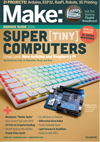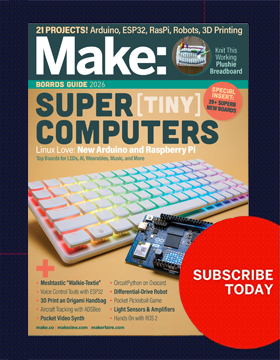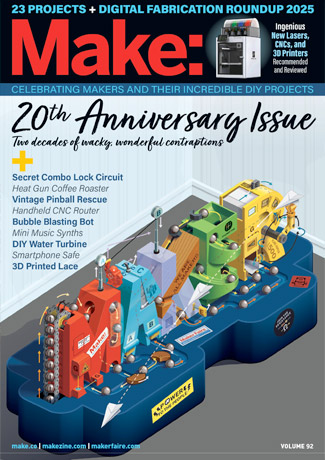

It’s a rare thing to start a magazine and see it survive for 20 years. It’s even rarer that a magazine would become a catalyst for a community and a movement, based on a set of ideas:
- It’s part of human nature to make things. It’s who we are at our best.
- We are all makers, but not everyone realizes they have the gift.
- Look at the many physical and digital tools for making things.
- Makers create all kinds of things for work and play, from the serious to the silly.
- We foster a kind and generous community that welcomes all.
One of the questions I’ve been asked, and it’s awkward for me, is “How did you create the maker movement?” I usually start by saying that I didn’t create it. I started a magazine to show the amazing projects that people make, and I called our readers makers. I created Maker Faire to bring makers together to showcase their projects for a broader audience. I thought that was the best way for others to see themselves as makers and join in. I did those things with intention but I didn’t know where it would lead. Make: had the good fortune to find more and more people who read this magazine, go to Maker Faire, and work on projects of their own. Because so many embraced the word maker and made it their own, and because they sought a connection to other makers — all of us created a movement.
Makers have always existed. I am appropriately humbled when I meet someone who says they were a maker before maker was a thing. Popular magazines similar to Make: once existed in a similar trim size — for example, Popular Science, Popular Mechanics, and Popular Electronics. Their day seemed to pass when kits for building computers gave way to manufactured personal computers.
We wondered if a new generation would enjoy making things and find that it was worth the time and effort — also because it was so much fun.
The magazine got started in 2005 before Arduino and Raspberry Pi, before MakerBot and Prusa, before Tinkercad and Fusion 360 and many others. Soon, however, new software came along that made it easier to make things and new hardware came that was a lot more affordable. This democratization of technology made the tools of production available to more people and gave them new capabilities. It created new opportunities. However, it wasn’t the tools alone — we were excited to see what projects were possible with the new technology. We also wanted to see more young people have the opportunity to become makers.
The first issue of Make: featured Prof. Neil Gershenfeld, the founder of Fab Labs, and a column by Tim O’Reilly of O’Reilly Media who gave this magazine the green light. From its beginning, Make: was a magazine by and for makers and it still reflects their interests and capabilities. All 20 years of projects, all contributed by makers, are the heart and soul of the magazine. Makers are ordinary people who have developed special talents that surprise and delight us. My own life is richer for having met so many makers everywhere in the world, which would never have happened but for this magazine.
Our editorial team, Keith, David, Craig, and Sam, like many before them, are wranglers of makers who occasionally crack the whip to get things in order. Juliann, our creative director, snaps her fingers to create the magical layouts that make DIY projects look even better. Together, they shape what’s in your hands today, a rare and remarkable product that reflects the dreams and doings of a creative community. All of us at Make: are grateful for all of you — makers past, present, and future.
This article appeared in Make: Vol. 92. Subscribe for more maker projects and articles!
ADVERTISEMENT






